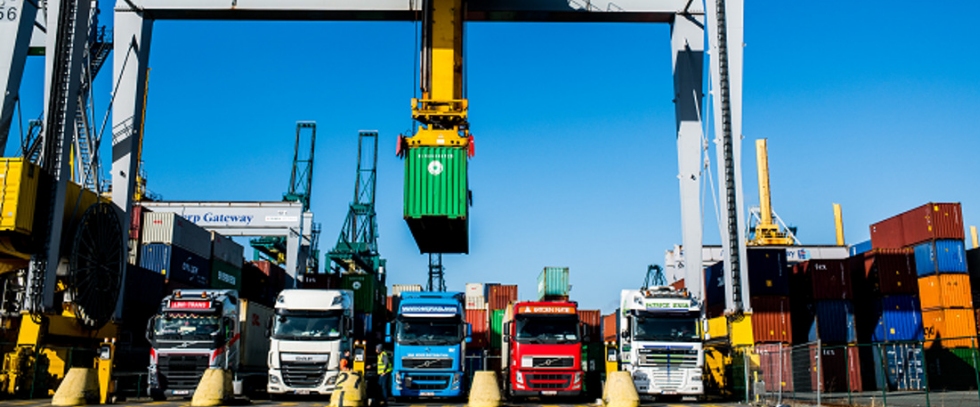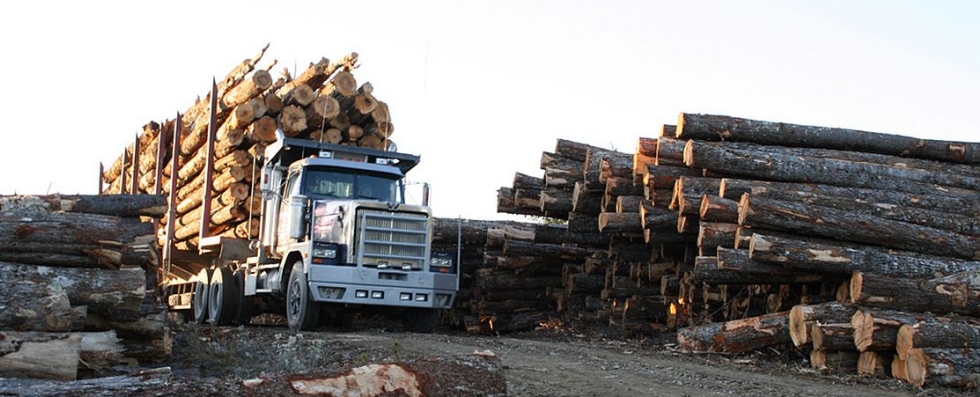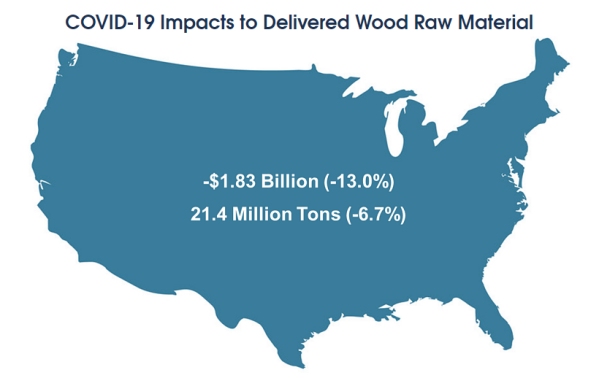|

HyTrucks Consortium Aims to Have 300 Hydrogen-powered Trucks on the Road in Belgium by 2025
May 7, 2021 - Air Liquide, DATS 24 and Port of Antwerp join forces in the HyTrucks consortium to deploy 300 hydrogen-powered trucks and the related renewable hydrogen production infrastructure and supply chain assets in Belgium as part of the HyTrucks initiative. This project aims at enabling in total 1,000 hydrogen-powered zero-emission trucks on the roads and building the adequate infrastructure connecting Belgium, the Netherlands and western Germany by 2025.
The partnership aims to deploy hydrogen-powered trucks mainly in the area around the Port of Antwerp and major logistics hubs in Belgium. Hydrogen trucks will be used for intensive local and international transport.
Jacques Vandermeiren, CEO of Port of Antwerp, said: “We want to give hydrogen every chance as an energy carrier, a basic element for chemistry and a fuel, and are therefore committing ourselves as an active pioneer in the hydrogen economy. As a world port and Europe’s largest integrated chemical cluster, we are an important link in this chain. Thanks to the collaboration between partners with the right expertise, we have all the assets we need to take further concrete steps in this regard and to set an example for other ports and regions.”
The HyTrucks initiative is one of the largest European projects to deploy zero-emission heavy-duty fleets in Europe’s most intense traffic areas. It aims at reducing significantly CO2 emissions by an estimated amount of more than 100,000 tonnes per year, equivalent to 110 million kilometers driven, thanks to 1,000 trucks, and a first network of 25 high-capacity hydrogen stations connecting Antwerp, Rotterdam, and Duisburg. In Belgium, the HyTrucks project aims at reducing CO2 emissions by an estimated amount of more than 30,000 tonnes per year, equivalent to 33 million kilometres driven.
Clean hydrogen is one of the energy carriers particularly suited for heavy-duty vehicles that enables the reduction of greenhouse gases, urban pollution, and dependency on fossil fuels. On top of reducing CO2 emissions, hydrogen-powered transport will have a positive impact on health and will also contribute to avoid particulate matter, NOx, noise, and vibrations compared to diesel engines.
A growing set of partners representing the whole value chain -truck manufacturers, transport companies, leading fuel cell suppliers- have already agreed to join the initiative announced earlier this year. The companies represented in the larger HyTrucks initiative in the 3 concerned countries will jointly perform the feasibility study.
The initiatives of Air Liquide and DATS 24 have been selected by the Flemish and Dutch government for EU notification as an “important project of common European interest” (IPCEI), and thus obtained eligibility for funding status from European, Federal and Flemish governments. IPCEI allows for enhanced state aid and will help the project as a first of its kind with new technology forward.
SOURCE: Port of Antwerp |
|
|

Proposed Safe Routes Act Would Improve Log Truck Efficiency, Safety
Authored by Forest2Market
March 31, 2021 - Last week, Rep. Mike Gallagher (R-WI) introduced the Safe Routes Act of 2021, a bill that would allow logging trucks that meet state-determined legal requirements to travel up to 150 air miles on the Federal Interstate Highway System. Current law prohibits trucks that meet these requirements from using the federal interstate, forcing them to use state and local roads that increase the risks associated with their trips.
“When logging trucks aren’t allowed to use federal highways, they use state and local roads where they encounter school zones, crosswalks, and sharp curves. This doesn’t just extend the time it takes to get their products from point A to point B, but increases the number of accidents involving these trucks,” said Rep. Gallagher. “This bill makes a common-sense change that allows certain trucks to travel on the interstate, and in doing so, helps reduce carbon emissions, increase efficiency, and make roads safer.”
A 2018 study found that 96% of logging truck collisions occurred on city, county, or state roads, and a 2018 University of Georgia study found that 41% of logging truck collisions occurred within only 5 miles of an interstate. A recent pilot program in Maine indicated that enacting legislation like this would greatly reduce both fatal accidents and fossil fuel usage by trucks.
The University of Minnesota's Department of Forest Resources conducted to studies on how implementing this legislation would impact Central and Northeast Wisconsin. Click HERE to view conclusions from those case studies.
The bill is supported by a number of forest industry groups, including the Forest Resources Association (FRA), the American Logging Council, and the Great Lakes Timber Professionals Association.
Industry Feedback
Of the proposed legislation, FRA President Deb Hawkinson said, "Truck transportation is the only means to move raw forest products from the woods to the mill. Railroad is simply not an option. We want this transportation to have the safest possible route, and the Safe Routes Act provides just that. Interstates are 3-4 more times safer than traveling on state and county roads. However, this option is not available to log trucks due to outdated Federal regulations. The research shows that log trucks traveling on non-interstate roads have a greater risk of accidents as they encounter two-way traffic, intersections, school zones, pedestrians, and driveways. Logging businesses and the forest products industry value the safety of their workers.”
Heidi Brock, President & CEO of the American Forest and Paper Association (AF&PA) added: “AF&PA applauds the reintroduction of the Safe Routes Act, and Congressman Mike Gallagher’s important work on this issue. This legislation makes roads safer, ensures our supply chain is more efficient and reduces carbon emissions. The Safe Routes Act gives logging trucks the option to avoid pedestrians, school zones and intersections by allowing greater access to the Interstate Highway System. Our industry is eager to continue working to further this critical, bipartisan legislation.”
Will Telligman, Government Affairs Director of the Southeastern Lumber Manufacturers Association, said: "The Southeastern Lumber Manufacturers Association applauds Congressman Gallagher’s efforts to include the Safe Routes Act in the next surface transportation bill. The Safe Routes Act is common sense legislation that would allow the forest products industry to move raw materials in a safer and more efficient manner. Allowing trucks hauling logs, pulpwood, biomass, or wood chips access to the interstate system at the same weight limits as state highways would not only help reduce truck traffic in urban areas, but also increase access to timber while reducing fuel consumption.”
Forest2Market provides pricing data, supply chain expertise and strategic consulting services to participants in the global wood and fiber supply chain. The Forest2Market's unique databases contain more than 400 million rows of transaction data; they are the foundation for all analytics available in the firm's business intelligence platform, SilvaStat360, as well as client resource studies and consulting engagements. To learn more, visit www.forest2market.com.
SOURCE: Forest2Market |
|

UIRR Study Warns for Consequences of New EU Road Haulage Rules
By Nikos Papatolios, Editor at RailFreight.com
Jan. 15, 2021 - The European Parliament adopted the Mobility Package I last July. It includes rules that concern drivers’ working conditions, rules for drivers in international transport, and update provisions regarding access to the haulage market. However, it also provides the chance to the EU Member States to suspend Article 4 of the Combined Transport directive in their territories. This practically means that short-distance trucking prices could double — a catastrophic consequence for CT that relies on them.
Study results
UIRR (International Union for Road-Rail Combined Transport) conducted its study with the participation of twenty companies from ten different countries. The study’s focus laid in assessing where and how the new EU haulage rules could impact CT, conducting a comprehensive market survey and qualifying possible effects based on market input and CT volumes.
The key takeaways from the assessment are nothing but ominous. If the Member States use their ability to suspend Article 4, the results could impact both costs and capacities of Combined Transport. Moreover, they could undermine CT’s competitive position due to the boost of long-distance road haulage, CT’s direct competitor. Finally, and even worse, implementing such policies could reverse the modal shift from rail to road, since CT volumes will drop significantly.
Among the most heavily impacted countries from the new rules, one can find Germany and Italy, France and Belgium. However, unwanted results will also appear in countries like Austria, the Netherlands, Luxemburg, Sweden, Spain and Hungary. Most importantly, the 8 per cent decrease in CT volumes mentioned above will also impact nineteen country origin-destination pairs that will see transport between them altering entirely.
Immediate solution
Regarding the ways to deal with the new status quo, UIRR came up with four proposals: the first thing to do is persuade Member States to abstain from the optional possibility to suspend article 4 of CT directive. As UIRR President, Ralf-Charley Schultze commented, this approach needs to be characterised by smart moves and negotiations. Since the EU already adopted the rules, this could not change easily.
Nevertheless, the Combined Transport sector can still communicate with EU states individually and acquire a political solution to the problem. After all, it is in the hands of each state to suspend Article 4. Thus, communication of fair requests and securing each country’s fair play is UIRR’s and CT’s most potent weapon currently.
Additional measures
Additionally, the second measure concerns adopting the Eurovignette directive reform in line with the European Parliament’s position and reforms in energy taxation during 2021. The Eurovignette Directive 1999/62/EC concerns the charging of heavy goods vehicles for the use of certain infrastructures. Together with its two updates, the regulatory framework aims to ensure the investment of revenues in infrastructure maintenance, the prevention of discrimination on the market and the internalisation of some main external costs such as congestion, noise and air pollution. Regarding energy taxation, UIRR wishes to see a proportionality between the energy content of the fuel and the adopted pricing of CO2 per tonne. In simple words, it demands fair taxation for the use of fuels in different transport modes.
Furthermore, UIRR proposed some temporary compensatory measures such as waiving track access charges, adopting the block exemption for state aid, upgrading the TEN-T network for 740m/P400 train paths and securing capacity for freight transport through network utilisation concepts. Finally, it called for transparency and the complete informedness of decision-makers through regular and comparable reporting by the Member States.
SOURCE: RailFreight.com |
|

$1 Billion USMCA Logistics Complex Planned for Mexico
By Noi Mahoney for FreightWaves
Jan. 13, 2021 - Officials in Mexico unveiled plans Tuesday for a multimodal logistics center aimed at boosting international trade as part of the United States-Mexico-Canada Agreement (USMCA).
The project will include an investment of $1.2 billion and could generate more than 65,000 jobs in Nextlalpan, a town about 25 miles north of Mexico City, said Alfredo Del Mazo Maza, the governor of the state of Mexico.
Called the USMCA Park Logistics Center, the complex will complement the $3.5 billion Felipe Ángeles International Airport that is being constructed nearby.
“Today we received the executives of E-Group, who introduced us to the USMCA Park Logistics Center complex in Nextlalpan, where they will invest [$1.2 billion] generating more than 65,000 jobs,” Mazo Maza said in a release. “The new Felipe Ángeles International Airport, with the construction of the USMCA Park Logistics Center, will consolidate itself as one of the most important centers in the country.”
The USMCA Park Logistics Center will be a multimodal, logistics and industrial park that will include airport and railway services.
SOURCE: FreightWaves.com |
|

Impact of COVID-19 on America's Forest Supply Chain
Sept. 2, 2020 - The global forest products industry has been making headlines since the COVID-19 pandemic struck at the beginning of 2020. First, the pulp & paper sector was the talk of the town during the widespread run on toilet paper that took place from March - June, and the lumber sector has been front-page news in recent weeks as prices for finished lumber have set new records by huge margins.
But the myriad impacts related to the COVID-induced shutdown of the American economy continue to unfold, as they will for months to come. While the attention is beneficial in helping to educate the public and illustrate the complexities of the forest supply chain, those of us close to the industry have wondered about the degree to which COVID-19 “lockdowns” have impacted forest industry production and economic activity.
Forest2Market was recently commissioned by the American Loggers Council (ALC) to identify just how significant the impacts have been to America’s forest products supply chain.
Forest2Market research shows that wood raw material consumption between January-July 2020 was 6.7% lower than the same period in 2019 – dropping by 21.4 million tons of material. This resulted in a 13% reduction ($1.83 billion) in value of the delivered wood. That $1.83 billion dollar loss in value has had a significant impact throughout the forest supply chain, from timberland owners to loggers and truckers.

Unfortunately, as the ALC notes, both Congress and the United States Department of Agriculture (USDA) have provided funding for numerous agricultural categories, but they have not yet classified timber in the category that qualifies for COVID-19 assistance. Timber and forests are described as agricultural commodities along with fruits, vegetables, and other common agricultural goods (7 U.S.C Section 1518).
To help highlight the impacts of COVID-19 on the US logging and wood products supply chain, the ALC created SaveOurLoggers.com as an outlet that features testimonial stories and videos directly from those who have experienced difficult circumstances.
In Washington, bipartisan Logger Relief bills have been introduced in the Senate (S.4233) by Senator Susan Collins (R-ME) and Senator Tina Smith (D-MN), and in the House (H.R. 7690) by Representative Jared Golden (D-ME) and Representative David Rouzer (R-NC). Specifically, the bills would direct the USDA to make economic relief payments to logging and log trucking businesses who experienced losses of greater than 10% in the first two quarters of 2020 (compared to 2019). Members of Congress from 13 states have co-sponsored the Logger Relief Act.
SOURCE: Forest2Market |
|
|